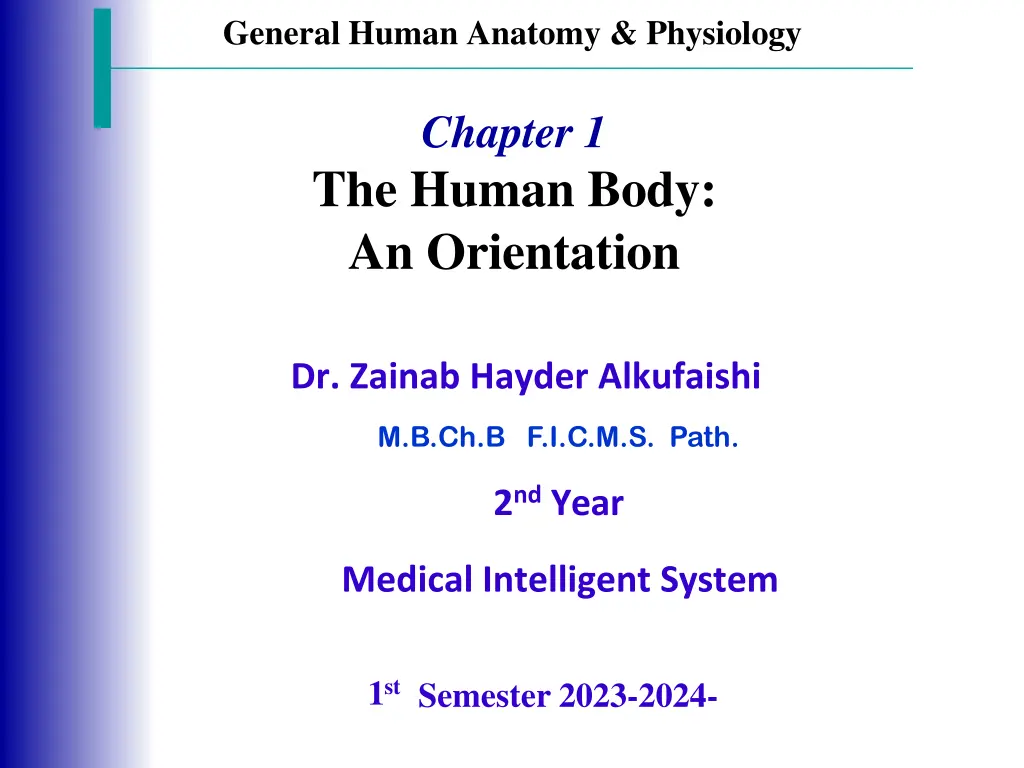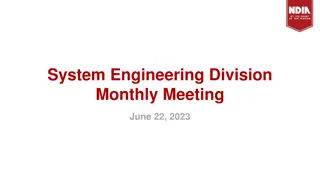
Understanding Human Anatomy and Physiology Basics
Explore the fundamentals of human anatomy and physiology, including the levels of structural organization, tissues, organ systems, and more. Discover the intricate workings of the human body to gain a comprehensive orientation in this field.
Download Presentation

Please find below an Image/Link to download the presentation.
The content on the website is provided AS IS for your information and personal use only. It may not be sold, licensed, or shared on other websites without obtaining consent from the author. If you encounter any issues during the download, it is possible that the publisher has removed the file from their server.
You are allowed to download the files provided on this website for personal or commercial use, subject to the condition that they are used lawfully. All files are the property of their respective owners.
The content on the website is provided AS IS for your information and personal use only. It may not be sold, licensed, or shared on other websites without obtaining consent from the author.
E N D
Presentation Transcript
General Human Anatomy & Physiology Chapter 1 The Human Body: An Orientation Dr. Zainab Hayder Alkufaishi M.B.Ch.B F.I.C.M.S. Path. 2nd Year Medical Intelligent System 1stSemester 2023-2024-
General Human Anatomy & Physiology Learning Objectives Define anatomy and physiology Identify the different levels of structural organisation that make up the human body List and locate the 4 types of tissues in the body Explain the terms homeostasis, negative and positive feedback List the 11 organ systems and their major function Identify terminology related to planes and anatomical term
The Human Body An Orientation Anatomy study of the structure and shape of the body and its parts Physiology study of how the body and its parts work or function
Anatomy Levels of Study Gross Anatomy Large structures Easily observable
Anatomy Levels of Study Microscopic Anatomy Very small structures Can only be viewed with a microscope
Organ System Overview Integumentary Forms the external body covering Protects deeper tissue from injury and drying out Synthesizes vitamin D Location of cutaneous nerve receptors
Organ System Overview Skeletal Protects and supports body organs Provides muscle attachment for movement Site of blood cell formation Stores minerals
Organ System Overview Muscular Allows locomotion Maintains posture Produces heat
Organ System Overview Nervous Fast-acting control system Responds to internal and external change Activates muscles and glands
Organ System Overview Endocrine Secretes regulatory hormones Growth Reproduction Metabolism
Organ System Overview Cardiovascular Transports materials in body via blood pumped by heart Oxygen Carbon dioxide Nutrients Wastes
Organ System Overview Lymphatic Returns fluids to blood vessels Disposes of debris Involved in immunity- destroys bacteria and tumor cells
Organ System Overview Respiratory Keeps blood supplied with oxygen Removes carbon dioxide
Organ System Overview Digestive Breaks down food Allows for nutrient absorption into blood Eliminates indigestible material
Organ System Overview Urinary Eliminates nitrogenous wastes Maintains acid base balance Regulation of materials Water Electrolytes
Organ System Overview Reproductive Production of offspring
Necessary Life Functions Maintain Boundaries- keeps the body s internal environment distinct from the external environment- the skin and membranes Movement Locomotion Movement of substances Responsiveness Ability to sense changes and react Digestion Break-down and delivery of nutrients
Necessary Life Functions Metabolism all chemical reactions within the body Production of energy Making body structures Excretion Elimination of waste from metabolic reactions
Necessary Life Functions Reproduction Production of future generation Provides new cells for growth and repair Growth Increasing of cell size and number
Survival Needs Nutrients Chemicals for energy and cell building Includes carbohydrates, proteins, lipids, vitamins, and minerals Oxygen Required for chemical reactions
Survival Needs Water 60 80% of body weight Provides for metabolic reaction Stable body temperature Atmospheric pressure must be appropriate
Homeostasis Maintenance of a stable internal environment = a dynamic state of equilibrium Homeostasis must be maintained for normal body functioning and to sustain life Homeostatic imbalance a disturbance in homeostasis resulting in disease
Maintaining Homeostasis The body communicates through neural and hormonal control systems Receptor Responds to changes in the environment (stimuli) Sends information to control center
Maintaining Homeostasis Control center Determines set point Analyzes information Determines appropriate response Effector Provides a means for response to the stimulus
Homeostasis Stable operating conditions in the internal environment Three components interact STIIgULUs (input into the system) RESPONSE (system's output} RECEPFOR (e.g., free nerve ending in the skin) INTEGRATOR (such as the brain) *----, E V E R (amuscle or a gland) The response to the stimulus leads to change The change is fedback to the receptor. In negative feedback, the response of the system cancels or counteracts the effect of the original stimulus.
Feedback Mechanisms Negative feedback Includes most homeostatic control mechanisms Shuts off the original stimulus, or reduces its intensity Works like a household thermostat
Feedback Mechanisms Positive feedback Increases the original stimulus to push the variable farther In the body this only occurs in blood clotting and birth of a baby
The Language of Anatomy Special terminology is used to prevent misunderstanding Exact terms are used for: Position Direction Regions Structures
Orientation and Directional Terms Table 1.1
Body Landmarks Anterior
Body Landmarks Posterior
Abdominopelvic Quadrants
Abdominopelvic Major Organs






















